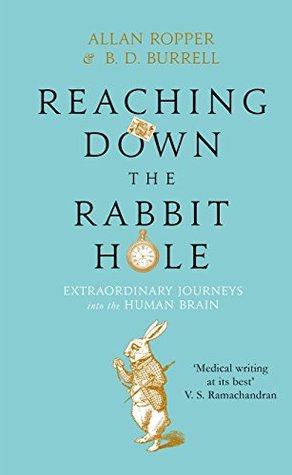More on this book
Community
Kindle Notes & Highlights
Read between
November 3 - November 4, 2022
How do you begin to understand a sick brain? The only viable answer, as this book will show, is that you do it by engaging the person inside, and you do it on a case-by-case basis.
In Alice’s Adventures in Wonderland, Alice jumps into a rabbit hole and finds herself in a bizarre realm in which nothing is what it seems, where everything bears little relation to the outside world. It is a place where, as the Red Queen mentions to Alice, it helps to believe six impossible things before breakfast.
“Are you depressed?” “No, not depressed . . . just sick of all this.” “Discouraged?” “Yeah.” “Well, thanks for letting us spend some time with you. We’re racking our brains to figure out what’s going on.”
Alice in Wonderland is an absurdistan story. Beyond fantasy, it’s ridiculous. That’s neurology in a nutshell. Your patient disappears down a rabbit hole. You’ve got to do something. You can’t just sit there, so you go down the hole after the patient.
It may sound trite to say that confusion is the most confusing syndrome in medicine, but it is.
Psychosis is a special type of confusion with its own reality, an internal reality that is consistent only with itself.
Memory works both forward and backward. Forward, or anterograde memory, is the ability to form memories going forward. Backward, or retrograde memory, is the ability to retain memories of the past. The two are inextricably linked: when you lose one, you lose the other.
Only one organ has a mind of its own, and it is constantly causing problems for itself. These problems, once termed “hysterical” and “psychosomatic,” are now called “functional” or “somatoform.” The conditions themselves are referred to as conversion disorders, implying the conversion of psychic distress into physical symptoms. It is one of the last vestiges of Sigmund Freud’s legacy still lurking in mainstream medicine.
Symptoms are what a patient reports. Signs are what a physician sees in an examination. Symptoms are thus subjective, and signs objective.
“The patients are holding out their troubles. They are not really asking you to take them. You should only take them if you want or need to take them. Otherwise, leave it. They’ll get along without your suffering. You have another job to do.”
George reminds me often that our role is to give Sophie balloons, not anchors.
By the dictates of the scientific method, we are obliged to seek evidence to disprove our assumptions rather than verify them.
Deductive reasoning, as opposed to inductive reasoning, is what detectives and diagnosticians should be doing. Deduction works from general facts toward specific conclusions. If the “facts” really are facts, the conclusions have to be true. But induction—a quicker and much more practical method of reasoning that everyone uses every day—can lead to errors. That’s because an inductive process infers a conclusion, but doesn’t prove it.
Alan Shewmon claims, rightly, that there are three concepts of death: a biological one that speaks of the organism, a psychological one that speaks of the person, and a sociological one that speaks of the legal person.


